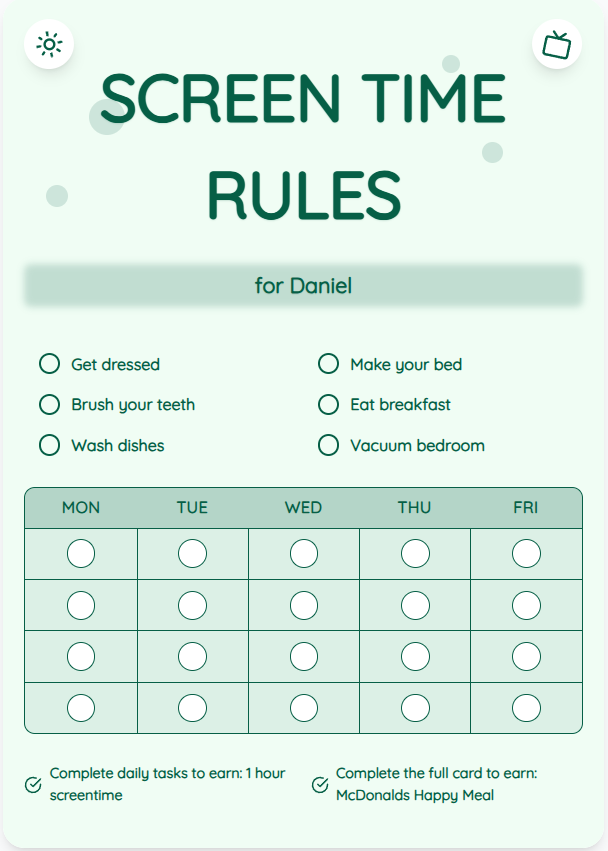Screen Time Management for Adults: Finding Harmony in a Digital World
As adults juggle work, personal life, and digital entertainment, finding the right balance in screen time is crucial. Explore actionable tips and insights to navigate the digital landscape effectively while nurturing family harmony.
See What Your Screen Time Chart Will Look Like
Here's an example of a beautiful, customizable screen time rules chart you can create for your family

Understanding the Impact of Screen Time on Adults
Excessive screen time can lead to various health issues like eye strain, sleep disturbances, and decreased productivity. It's essential to be mindful of how digital devices affect our well-being.
Setting Boundaries and Establishing Priorities
Create a schedule that designates specific times for work, leisure, and family interactions. Prioritize activities that promote physical health, mental well-being, and meaningful connections.
Put These Tips Into Action
Create a custom chart to implement these strategies with your child
Practical Tips for Managing Screen Time
1. Use screen time tracking apps to monitor usage. 2. Implement device-free zones in your home. 3. Engage in offline hobbies and activities. 4. Set realistic limits on social media and entertainment consumption.
Balancing Screen Time with Self-Care
Practice mindfulness, exercise regularly, and engage in activities that promote relaxation and stress relief. Remember that self-care is essential for overall well-being.
Practical Tips for Success
- Prioritize face-to-face interactions over virtual communication.
- Take regular breaks from screens to reduce eye strain.
- Engage in outdoor activities to counterbalance sedentary screen time.
- Model healthy screen time habits for children to emulate.
Frequently Asked Questions
How much screen time is considered excessive for adults?
While recommendations vary, aiming for no more than 2-3 hours of recreational screen time per day is a good starting point. However, individual needs and responsibilities should also be considered.
Can screen time charts help adults regulate their digital usage?
Yes, using screen time charts can provide visual cues and reminders to manage screen time effectively. These tools can aid in creating a balanced routine that prioritizes both work and leisure activities.
How can adults involve children in setting screen time limits?
Incorporate children in creating family screen time rules. Discuss the importance of moderation and lead by example by demonstrating healthy screen time habits.
By implementing these practical strategies and fostering a mindful approach to screen time, adults can find harmony in their digital interactions. Remember, a balanced lifestyle contributes to overall well-being and strengthens family relationships.
Ready to Transform Your Family's Screen Time?
Join thousands of parents who have successfully managed screen time with our customizable charts.
